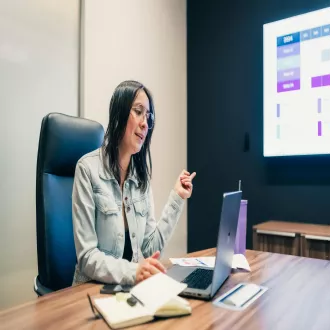Transcription Listening Styles: Detail-Orientation vs. Overview
Self-assessment: Are you detail oriented or big picture oriented?
Each person has a natural tendency in the way they listen and process information.
The first step to becoming a more flexible communicator is self-assessment to identify which is your predominant style: detail oriented or big picture oriented.
Detail-oriented people focus on specific facts, figures, logical arguments and thorough descriptions; they often feel that others are not providing them with enough information.
On the other hand, general idea-oriented people focus on the overall concept and purpose of the message and may forget or ignore the small details.
Recognizing your own bias is crucial, as one style may be more appropriate than another depending on the context; for example, as you move up the organizational hierarchy, the ability to see the "big picture" becomes increasingly essential.
Strategies for retaining important details (visualization, notes).
For those whose natural tendency is to focus on the big picture, retaining important details requires conscious effort and the application of specific techniques.
The first step is to have the explicit intention to remember the information.
A powerful mental technique is visualization, which consists of associating images with what the person is explaining to create stronger memory anchors.
In professional contexts, the most reliable strategy is to take detailed notes, which not only helps retention, but also demonstrates to the speaker that you value his or her information.
Finally, it is crucial to summarize and confirm key points at the end of the conversation, using phrases such as, "To make sure I have grasped everything, the main points are...".
This validates understanding and corrects any possible misunderstandings.
How to take perspective so as not to get lost in the details.
For people who are naturally detail-oriented, the challenge is the opposite: learning to take distance so as not to drown in minutiae that can detract from the main objective.
The most effective strategy to achieve this is to clarify the purpose of the discussion from the outset.
Knowing whether a meeting is to define the overall strategy or to plan specific tasks helps to gauge the level of attention.
During a conversation, if you feel you are getting lost in details, you can pause and ask, "What is the main objective we are trying to solve here?"
In addition, a very useful leadership technique is to periodically summarize the discussion.
Synthesizing what was discussed in a few sentences forces everyone to lift their eyes, refocus on the big picture, and ensure that the conversation is moving in the right direction.
Summary
The first step to being a flexible communicator is self-assessment to identify whether your listening style is detail or big picture orientation. Recognizing your own bias is crucial to adapting to the context.
For those who focus on the general idea, retaining details requires techniques such as visualization, note-taking and summarizing key points. This validates understanding and corrects any possible misunderstandings.
For detail-oriented people, the challenge is to take distance so as not to drown in details. The most effective strategy is to clarify the objective of the discussion at the outset to gauge the level of attention.
listening styles detail orientation vs overview




